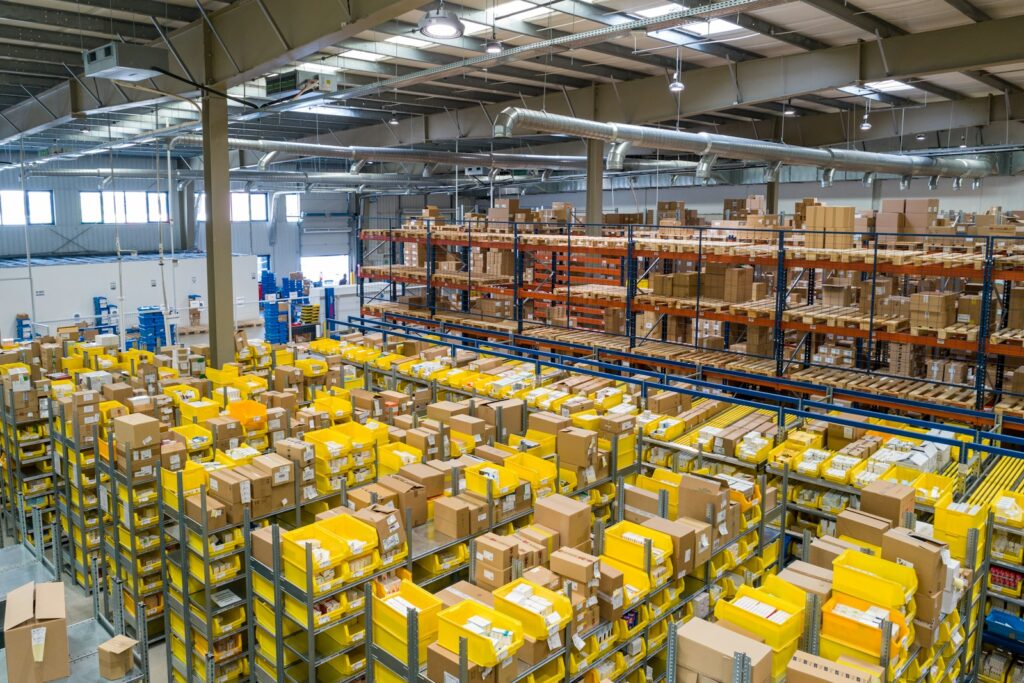How to Enhance Supplier Collaboration through Supply Chain Visibility Software

Imagine knowing exactly where your shipments are, how your suppliers are performing, and what potential risks lie ahead—before they become costly surprises. This level of clarity transforms supplier relationships from transactional to strategic. The secret behind this shift? Smart supply chain visibility software.
When organizations and their suppliers operate from the same real-time data, collaboration becomes seamless, proactive, and results-driven. Let’s explore how visibility tools are revolutionizing supplier collaboration and how your business can leverage them to build a more agile, resilient supply chain.
The Role of Visibility in Supplier Collaboration
Effective collaboration requires transparency and trust, which are impossible without a shared “single source of truth.” This is exactly what supply chain visibility tools provide—ensuring that everyone, from procurement teams to suppliers, works from the same data.
Visibility as a Shared “Single Source of Truth”
The foundation of good supplier collaboration is data transparency. A supply chain visibility platform centralizes and syncs information across parties, eliminating blind spots and discrepancies that often lead to delays and miscommunication. When all stakeholders rely on unified data, coordination improves dramatically.
Real-Time Data vs. Delayed Reporting in Traditional Supply Chains
Traditional supply chains often suffer from lagged reporting, which can render decisions obsolete before they’re even made. In contrast, real time supply chain visibility provides live updates on shipments, inventory, and exceptions. This allows faster decision-making, proactive issue resolution, and more agile planning.
Key Visibility Tools Enabling Better Supplier Collaboration
The digital supply chain thrives on connected technologies. The following supply chain visibility technology options are transforming how businesses collaborate with suppliers.
Cloud-Based SCM Platforms
Cloud-based Supply Chain Management (SCM) platforms offer centralized control, scalability, and 24/7 access from any location. They are the cornerstone of modern collaboration, enabling seamless integration across different systems and geographies.
Supplier Portals and Dashboards
Portals allow suppliers to upload data, receive forecasts, track orders, and manage documentation. Dashboards, in turn, provide real-time metrics on KPIs like OTIF (On-Time In-Full), helping both parties align and course-correct as needed.
Integrated TMS/WMS with Supplier Access
Transportation Management Systems (TMS) and Warehouse Management Systems (WMS) equipped with supplier access make inbound logistics more transparent. Suppliers can track deliveries, confirm shipments, and adapt to warehouse constraints in real time.
IoT and Real-Time Tracking Systems
IoT devices offer real time supply chain visibility by tracking shipments, monitoring conditions (like temperature or humidity), and flagging disruptions. This data is crucial for industries with strict compliance needs, such as pharma or food.
Advanced Analytics and Predictive ETAs
AI-powered analytics and predictive Estimated Time of Arrivals (ETAs) allow suppliers and buyers to anticipate problems before they happen. This leads to proactive adjustments and better performance management.
Benefits of Visibility-Driven Collaboration
Leveraging supply chain visibility tools doesn’t just improve operations—it fosters deeper relationships, smarter planning, and long-term growth.
Improved Supplier Performance (Quality, Lead Times, OTIF)
When performance is monitored in real time, it creates accountability. Suppliers understand what’s expected and are empowered to meet or exceed standards, improving OTIF rates and product quality.
Faster Exception Handling and Fewer Surprises
One of the biggest benefits of supply chain visibility is faster reaction time. When delays or discrepancies are spotted immediately, teams can act swiftly, avoiding costly surprises and customer dissatisfaction.
Joint Planning and Forecasting (e.g., S&OP Alignment)
Visibility tools support Sales & Operations Planning (S&OP) by enabling shared forecasting. Suppliers can align production schedules with buyer demand, resulting in better fill rates and reduced waste.
Increased Agility During Demand Shifts or Disruptions
Whether it’s a port strike or a sudden demand spike, supply chain visibility technology gives you the agility to reroute, reallocate, or reschedule in hours—not days.
Reduction in Buffer Stock and Carrying Costs
With accurate, real time supply chain visibility, companies can reduce safety stock and inventory holding costs. Knowing where products are at any time reduces the need for excess inventory “just in case.”
Stronger Long-Term Partnerships and Innovation Co-Creation
Shared visibility builds trust. Over time, this trust leads to collaborative innovation, from co-developing new products to streamlining logistics operations for mutual gain.
Steps to Implement Supplier Visibility Initiatives
To successfully enhance supplier collaboration, companies need a strategic roadmap. Here’s how to improve supply chain visibility step by step.
1. Map Current Collaboration Practices and Pain Points
Start by assessing your current supplier communication channels, data flows, and bottlenecks. Identify where lack of visibility is causing delays, miscommunication, or inefficiencies.
2. Segment Suppliers by Strategic Importance
Not all suppliers require the same level of visibility. Segment your suppliers (e.g., critical, non-critical, strategic) to prioritize implementation and allocate resources effectively.
3. Identify Data Needs and Sharing Levels for Each Segment
Define what information needs to be shared with each supplier group—order status, inventory levels, production schedules, etc.—and determine the frequency and depth of data sharing.
4. Select and Deploy Suitable Visibility Tools
Choose supply chain visibility tools that integrate with your existing systems and are compatible with your suppliers’ tech maturity. A good supply chain visibility platform should support real-time tracking, data analytics, and secure access control.
5. Align KPIs and Incentives with Shared Goals
Define shared KPIs like OTIF, lead time variability, or response time to exceptions. Incentivize suppliers to meet these benchmarks through bonuses or preferred status tiers.
6. Train Supplier Teams and Internal Stakeholders
Roll out training sessions to help teams understand the technology, interpret data correctly, and act upon insights. A visibility tool is only effective if it’s used wisely.
7. Review and Iterate Based on Performance Data
Monitor results regularly. Use performance dashboards and feedback loops to refine strategies, fix weak spots, and celebrate improvements.
Challenges and How to Overcome Them
Adopting supply chain visibility technology isn’t without hurdles. Here’s how to overcome common roadblocks.
Data Silos and Poor Integration
Disparate systems often create silos. Invest in middleware or cloud platforms that can bridge these gaps and unify your data landscape.
Supplier Hesitance to Share Sensitive Data
Build trust by clarifying data usage, protecting confidentiality, and offering mutual value. Assure suppliers that visibility benefits them too.
Variability in Tech Maturity Across Suppliers
Not all suppliers are equally digitized. Provide lightweight portal access or mobile-friendly interfaces to ease adoption for lower-tech partners.
Governance and Access Control Issues
Establish clear protocols around who can access what data. Role-based permissions and audit trails can prevent misuse and foster trust.
Cultural Barriers: From Control to Collaboration
Visibility is not about micromanagement—it’s about teamwork. Encourage a mindset shift by emphasizing partnership, not policing.
Final Thoughts
Enhancing supplier collaboration isn’t just about better communication—it’s about smarter, shared decisions powered by data. With the right supply chain visibility tools, organizations can build transparent, agile, and resilient supply chains that drive performance and innovation.
Whether you’re just beginning or scaling up your digital transformation, leveraging a powerful supply chain visibility software like Agistix can be the catalyst to achieving a new level of supplier synergy.





